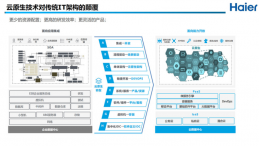For this round of testing,
the NEC Unified
Communications platform
was configured to provide
a UC solution for a
typical single office
environment enterprise
installation. Full
redundancy for the
principal servers, the SV7000 and the OW5000, was included and the
deployment was equipped to support up to a maximum of 6,000 users
with full voice messaging and unified communications capabilities.
UC client endpoint compatibility between NEC's proprietary messaging
system and IBM Lotus Sametime and Microsoft's Office Communicator was
verified.
H.323 to SIP endpoint tests were conducted to verify that latency and
voice quality were within acceptable limits for enterprise telephony.
MOS 4.0 was set as our minimum, but the NEC phones performed better,
achieving MOS scores of 4.4. For voice quality assessments we captured
live traffic from the network and then performed post capture analysis
with a ClearSight Analyzer, a distributed protocol and traffic analyzer
from ClearSight Networks. Additionally, voice quality assessments for
G.711 and G.729a codecs, used by the NEC hard phones, were both
evaluated with Touchstone Technologies' WinEyeQ product and scored by a
listening panel. The voice quality was described as "near high fidelity"
by our testers.
SIP traffic load tests (which emulated endpoints) were conducted using
the Empirix Hammer Transport and Touchstone's WinSIP. A very impressive
32,369 busy hour call attempts with 1,000 concurrent users was achieved
in testing.
Also put to the test were the system's presence propagation abilities.
To assess how long the system took to reflect a change in presence, we
changed a test user's status from available to busy and timed how long
the system took to reflect this.
A client scalability test using a scripted version of the real UC700
client (desktop client) showed generation of a credible 3,883 concurrent
unified communications sessions. This test was designed to stress both
call generation capabilities and presence propagation ability.
Security scans including open port scans, protocol interaction with
mutated traffic, common vulnerability exploit tests, denial of service
and SIP server torture tests were conducted using Miercom's testing suite
combined with a Mu Dynamics Mu-4000 Security Analyzer. The vulnerability
scans were run first to provide information that could be used in a
subsequent compound or complex attack. SIP signaling analysis and
verification of traffic encryption tests were again conducted using the
ClearSight Analyzer.










































































































 京公網安備 11010502049343號
京公網安備 11010502049343號